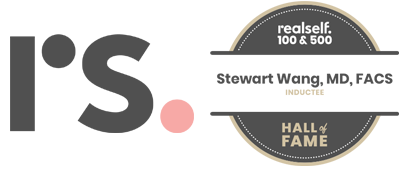What is fat grafting?
Fat grafting involves extracting live fat cells from an area where they are plentiful, such as the abdomen, hips, buttocks, or thighs, and transplanting them to a different area of the body to create newfound plumpness. Fat is a natural substance largely responsible for maintaining a youthful aesthetic and is commonly transferred to the hands, breasts, face, and lips. Fat often contains large amounts of stem cells, which are known for multiplying and developing into different types of cells. These stem cells contribute to the rejuvenating effects of the procedure. After transfer, the fat cells continue to grow in place. Fat grafting is therefore a natural alternative to injecting chemical substances or using implants for enhancement. Results from fat grafting are generally long-lasting because of the use of the patient's own bodily substance.
If you're ready to discuss your fat grafting breast augmentation options, now is a great time to schedule a consultation with Dr. Wang at our plastic surgery offices, serving Southern California including Pasadena, Rancho Cucamonga, Glendora, Chino Hills, Arcadia and Upland. Simply request a consultation online or call Wang Plastic Surgery at (888) 360-6688 today to schedule your appointment.
How is fat grafting performed?
Dr. Wang extracts fat from one part of the body (the donor area) using a small tube, called a cannula. The extracted material must then be processed to remove blood, fluid, and damaged fat cells while maintaining healthy fat cells. Dr. Wang then uses a syringe to meticulously inject these healthy cells into the desired area. The process of making minute incisions with a tiny syringe allows Dr. Wang to carefully sculpt the area thereby allowing for natural-looking results without the use of sutures. Subsequent scarring is therefore generally nonexistent. The patient not only achieves enhancement to the area of the injection, but also a reduction in size at the donor area. Depending on the nature of the procedure, either local or general anesthesia can be used.
How can fat grafting be used to enhance breasts?
Fat grafting is a natural alternative to using implants for breast enhancement. During this procedure, Dr. Wang removes fat from one area of the body and transfers it to the breast region. Some patients who opt for this method will be required to use an expansion device, which utilizes a pumping method to expand the breast area prior to the patient undergoing fat grafting. This suction pump-like device is used several weeks before and sometimes following the procedure. During the actual procedure, fat cells are removed from the donor area, processed to maintain only healthy fat cells, and then injected into the area between the skin and the breast capsule and/or behind the breast in the area between the breast and the chest wall. Because these injection areas are limited in size, volume increase with fat transfer is also limited (to less than a cup size). Therefore this procedure is best for patients seeking a more modest enhancement than that achieved with breast implants. It is especially effective for patients who have previously undergone breast augmentation and want to make their implants appear more natural by blurring the lines between implant and breast tissue. It can also be especially helpful in reconstructing breasts after a mastectomy.
What are possible complications from fat grafting to the breasts?
Fat grafting to the breast area can lead to the formation of nodules or cysts, which materialize as hardened lumps within the breasts. These hardened spots appear on mammograms and can sometimes interfere with breast cancer screening procedures. Similarly, breast implants can affect detection of cancerous formations in the area. Patients undergoing either procedure often require more extensive and frequent breast cancer screenings. Another possible complication is that the newly transplanted fat cells may simply be reabsorbed in the area and therefore volume increase can be lost. This may require a follow-up procedure.
What is the recovery process after fat transfer to the breasts?
Following the procedure, the treated area as well as the area from which fat was extracted is generally swollen for a few weeks. Bruising may also occur. Immediately following the surgery, the patient may have to continue using the surgical pump device on the breasts and will need to wear compression bandages on the area that received liposuction. Patients should refrain from strenuous activity for a few weeks following the procedure. Final results of the transfer are generally seen after about three months, during which time the body may reabsorb some fat cells.

 Fat Transfer (Grafting)
Fat Transfer (Grafting)












